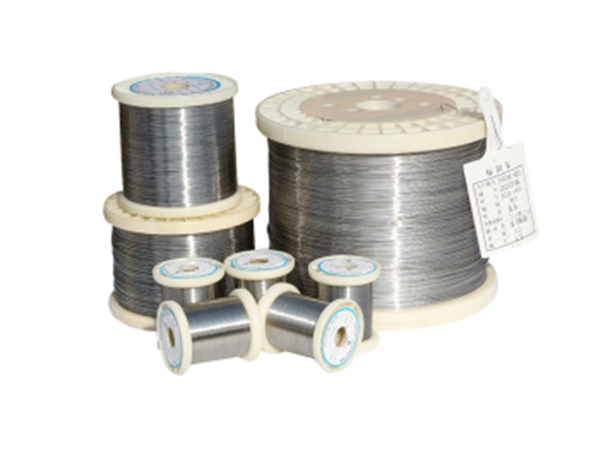"NiCr-CuNi thermocouple (type E) is also named NiCr-Constantan thermocouple. The main chemical composition of positive leg NiCr (EP) is Ni:Cr=90:10; negative leg Constantan (EN) is Cu: Nia 55%: 45%. Although EN, TN, JN are all called Constantan, EN and TN don not give the same EMF output curve

Products
NiCr-CuNi(constantan)thermocouple wire(Type-E)
"NiCr-CuNi thermocouple (type E) is also named NiCr-Constantan thermocouple. The main chemical composition of positive leg NiCr (EP) is Ni:Cr=90:10; negative leg Constantan (EN) is Cu: Nia 55%: 45%. Although EN, TN, JN are all called Constantan, EN and TN don not give the same EMF output curve as JN. EN and TN are able to interchange but they are not interchangeable with J. The operating temperature range of type E thermocouple is-200~900 C.
Type E thermocouple has the largest EMF output and highest sensitivity, so it is ideal for measuring small temperature change. It also has good stability in the low temperature range up to 300 C, and good property of anti-corrosion in humidity atmosphere. It is recommended for oxidizing or inert atmospheres, but cannot be used directly in reducing atmosphere and atmosphere with sulphur gases."
TYPE AND MAIN CHEMICAL COMPOSITION(%)
Type | CHEMICAL COMPOSITION | ||||
Ni | Cr | Cu | Si | Al | |
NiCr EP | 90 | 10 | / | / | |
CuNi EN | 45 | / | 55 | / | / |
Standard:IEC60584-1 | |||||
TYPE | EMF Versus Pt.67(mv) | ||||
100℃ | 200℃ | 400℃ | 600℃ | 800℃ | |
EP | 2.784~2.844 | 5.938~6.002 | 12.709~12.819 | 19.537~19.699 | 26.102~26.308 |
EN | 3.467~3.543 | 7.410~7.492 | 16.109~16.255 | 25.362~25.588 | 34.664~34.960 |
EP-EN | 6.251~6.387 | 13.348~19.494 | 28.818~29.704 | 44.899~45.287 | 60.766~61.268 |
TYPE | Density at 20℃ | Melting point | Tensile Strength | Elongation | Resistivity at 20℃ |
EP | 8.5 | 1427 | ≥490 | ≥10 | 0.71 |
EN | 8.9 | 1220 | ≥390 | ≥25 | 0.5 |


